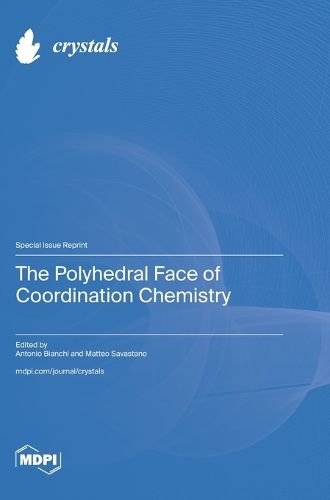Readings Newsletter
Become a Readings Member to make your shopping experience even easier.
Sign in or sign up for free!
You’re not far away from qualifying for FREE standard shipping within Australia
You’ve qualified for FREE standard shipping within Australia
The cart is loading…






This title is printed to order. This book may have been self-published. If so, we cannot guarantee the quality of the content. In the main most books will have gone through the editing process however some may not. We therefore suggest that you be aware of this before ordering this book. If in doubt check either the author or publisher’s details as we are unable to accept any returns unless they are faulty. Please contact us if you have any questions.
This Special Issue intends to celebrate the multifaceted aspects of coordination chemistry by showcasing original work that demonstrates the liveliness and colourful nature of different branches of this discipline. The development of coordination chemistry as we know it owes much to crystallography, with solid-state structural evidence playing a fundamental role in the definition and understanding of coordination compounds. Still, the very concept of coordination chemistry has expanded beyond the classical metal-ligand complexes: today, it encompasses supramolecular and bioinorganic compounds, metal-organic frameworks, and even organometallic species. The common thread to this apparently diverse range of topics lies in the "unique structural relationship", as addressed by Donald Cram, that keeps a complex together, applying to both traditional coordination compounds as well as to host-guest systems. Solid state remains the chief technique for elucidating the interplay of interactions involved in a complex species and the precise spatial relationships among its constituents. Yet, the application of such knowledge and, thus, of broadly interpreted coordination chemistry, easily extends to catalysis, recognition and sensing in solution, metals in medicine, crystal engineering, material and reticular chemistry, and much more.
$9.00 standard shipping within Australia
FREE standard shipping within Australia for orders over $100.00
Express & International shipping calculated at checkout
This title is printed to order. This book may have been self-published. If so, we cannot guarantee the quality of the content. In the main most books will have gone through the editing process however some may not. We therefore suggest that you be aware of this before ordering this book. If in doubt check either the author or publisher’s details as we are unable to accept any returns unless they are faulty. Please contact us if you have any questions.
This Special Issue intends to celebrate the multifaceted aspects of coordination chemistry by showcasing original work that demonstrates the liveliness and colourful nature of different branches of this discipline. The development of coordination chemistry as we know it owes much to crystallography, with solid-state structural evidence playing a fundamental role in the definition and understanding of coordination compounds. Still, the very concept of coordination chemistry has expanded beyond the classical metal-ligand complexes: today, it encompasses supramolecular and bioinorganic compounds, metal-organic frameworks, and even organometallic species. The common thread to this apparently diverse range of topics lies in the "unique structural relationship", as addressed by Donald Cram, that keeps a complex together, applying to both traditional coordination compounds as well as to host-guest systems. Solid state remains the chief technique for elucidating the interplay of interactions involved in a complex species and the precise spatial relationships among its constituents. Yet, the application of such knowledge and, thus, of broadly interpreted coordination chemistry, easily extends to catalysis, recognition and sensing in solution, metals in medicine, crystal engineering, material and reticular chemistry, and much more.